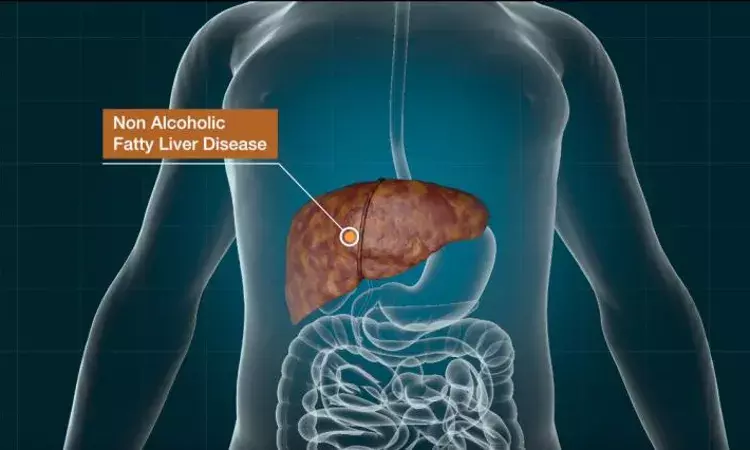- Home
- Medical news & Guidelines
- Anesthesiology
- Cardiology and CTVS
- Critical Care
- Dentistry
- Dermatology
- Diabetes and Endocrinology
- ENT
- Gastroenterology
- Medicine
- Nephrology
- Neurology
- Obstretics-Gynaecology
- Oncology
- Ophthalmology
- Orthopaedics
- Pediatrics-Neonatology
- Psychiatry
- Pulmonology
- Radiology
- Surgery
- Urology
- Laboratory Medicine
- Diet
- Nursing
- Paramedical
- Physiotherapy
- Health news
- Fact Check
- Bone Health Fact Check
- Brain Health Fact Check
- Cancer Related Fact Check
- Child Care Fact Check
- Dental and oral health fact check
- Diabetes and metabolic health fact check
- Diet and Nutrition Fact Check
- Eye and ENT Care Fact Check
- Fitness fact check
- Gut health fact check
- Heart health fact check
- Kidney health fact check
- Medical education fact check
- Men's health fact check
- Respiratory fact check
- Skin and hair care fact check
- Vaccine and Immunization fact check
- Women's health fact check
- AYUSH
- State News
- Andaman and Nicobar Islands
- Andhra Pradesh
- Arunachal Pradesh
- Assam
- Bihar
- Chandigarh
- Chattisgarh
- Dadra and Nagar Haveli
- Daman and Diu
- Delhi
- Goa
- Gujarat
- Haryana
- Himachal Pradesh
- Jammu & Kashmir
- Jharkhand
- Karnataka
- Kerala
- Ladakh
- Lakshadweep
- Madhya Pradesh
- Maharashtra
- Manipur
- Meghalaya
- Mizoram
- Nagaland
- Odisha
- Puducherry
- Punjab
- Rajasthan
- Sikkim
- Tamil Nadu
- Telangana
- Tripura
- Uttar Pradesh
- Uttrakhand
- West Bengal
- Medical Education
- Industry
Nonalcoholic fatty liver disease associated with preterm birth: Study
 NONALCOHOLIC FATTY LIVER DISEASE (NAFLD) OFTEN LEADS TO VARIOUS LIVER COMPLICATIONS, BUT THERE IS A LACK OF DRUGS FOR THE TREATMENT OF NAFLD. view more CREDIT: GWANGJU INSTITUTE OF SCIENCE AND TECHNOLOGY
NONALCOHOLIC FATTY LIVER DISEASE (NAFLD) OFTEN LEADS TO VARIOUS LIVER COMPLICATIONS, BUT THERE IS A LACK OF DRUGS FOR THE TREATMENT OF NAFLD. view more CREDIT: GWANGJU INSTITUTE OF SCIENCE AND TECHNOLOGYIn a new study conducted by Coralie Amadou and team it was shows the correlation between birth weight (BW) and the prevalence of nonalcoholic fatty liver disease (NAFLD). The findings of this study were published in Hepatology Journal.
Since the 1980s, the link between birth weight and metabolic consequences has been reported, but NAFLD has received little research. Therefore, the purpose of this study was to look into the relationship between BW and the prevalence of NAFLD in adult patients.
Participants from the French national Constances cohort from 2012 to 2019 made up the study population. Excessive alcohol use and chronic viral hepatitis histories preclude participation. The Fatty Liver Index (FLI) and the Forns Index were used in conjunction to achieve a noninvasive diagnostic of NAFLD and fibrosis. A sex-stratified logistic regression model with adjustments for sociodemographic factors, lifestyle factors, and birth term was used to assess the association between BW and NAFLD, while a sex-stratified linear regression model was used to investigate the link between BW and liver fibrosis.
The key findings of this study were:
1. 55,034 people with reliable BW in total (43% males, 38 years on average) were included.
2. There were 5530 people (10%) with NAFLD (FLI 60).
3. With no significant sex interaction, multivariate logistic regression revealed a strong U-shaped connection between BW and NAFLD.
4. Between BW and Forns Index, a substantial and gradually deteriorating correlation was discovered.
5. A substantial direct effect of preterm birth was found to be linked with NAFLD (OR, 1.23; 95% CI, 1.03-1.48 for delivery between 33 and 37 weeks versus 37 weeks), however there was no evidence of an indirect effect of low BW.
6. Participants who had preterm births compared to those who had full-term births did not have a substantially higher Forns Index.
This investigation in the general population reveals that those with low or high BW have a higher chance of developing NAFLD. The elevated risk in people who were born with HBW is probably influenced by excess body fat mass in maturity. In contrast to intrauterine growth retardation, preterm delivery is associated with a higher risk of NAFLD at the other end of the BW spectrum. Future studies in the same cohort should examine whether the higher risk in those with LBW is mediated by fat mass gained during the first few months of life. When it comes to the prevention of metabolic illnesses in children, BW should be seen as a key component. NAFLD should be viewed as one of the adult chronic diseases with early life origins.
Reference:
Amadou, C., Nabi, O., Serfaty, L., Lacombe, K., Boursier, J., Mathurin, P., Ribet, C., de Ledinghen, V., Zins, M., & Charles, M. (2022). Association between birth weight, preterm birth, and nonalcoholic fatty liver disease in a community‐based cohort. In Hepatology (Vol. 76, Issue 5, pp. 1438–1451). Wiley. https://doi.org/10.1002/hep.32540
Neuroscience Masters graduate
Jacinthlyn Sylvia, a Neuroscience Master's graduate from Chennai has worked extensively in deciphering the neurobiology of cognition and motor control in aging. She also has spread-out exposure to Neurosurgery from her Bachelor’s. She is currently involved in active Neuro-Oncology research. She is an upcoming neuroscientist with a fiery passion for writing. Her news cover at Medical Dialogues feature recent discoveries and updates from the healthcare and biomedical research fields. She can be reached at editorial@medicaldialogues.in
Dr Kamal Kant Kohli-MBBS, DTCD- a chest specialist with more than 30 years of practice and a flair for writing clinical articles, Dr Kamal Kant Kohli joined Medical Dialogues as a Chief Editor of Medical News. Besides writing articles, as an editor, he proofreads and verifies all the medical content published on Medical Dialogues including those coming from journals, studies,medical conferences,guidelines etc. Email: drkohli@medicaldialogues.in. Contact no. 011-43720751


